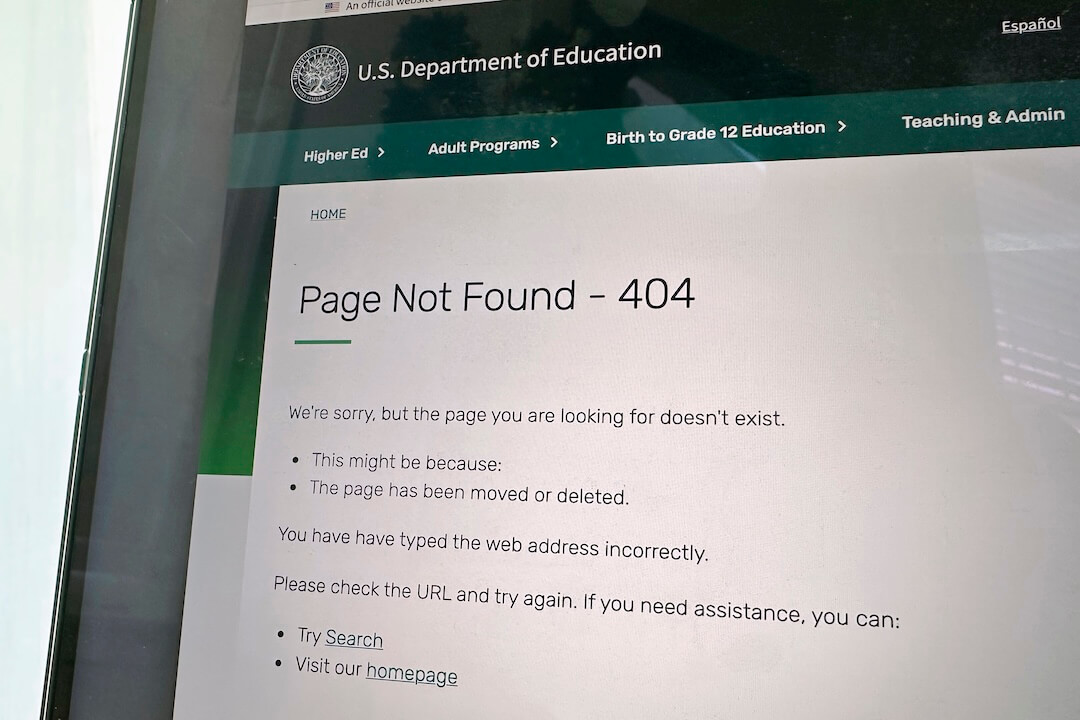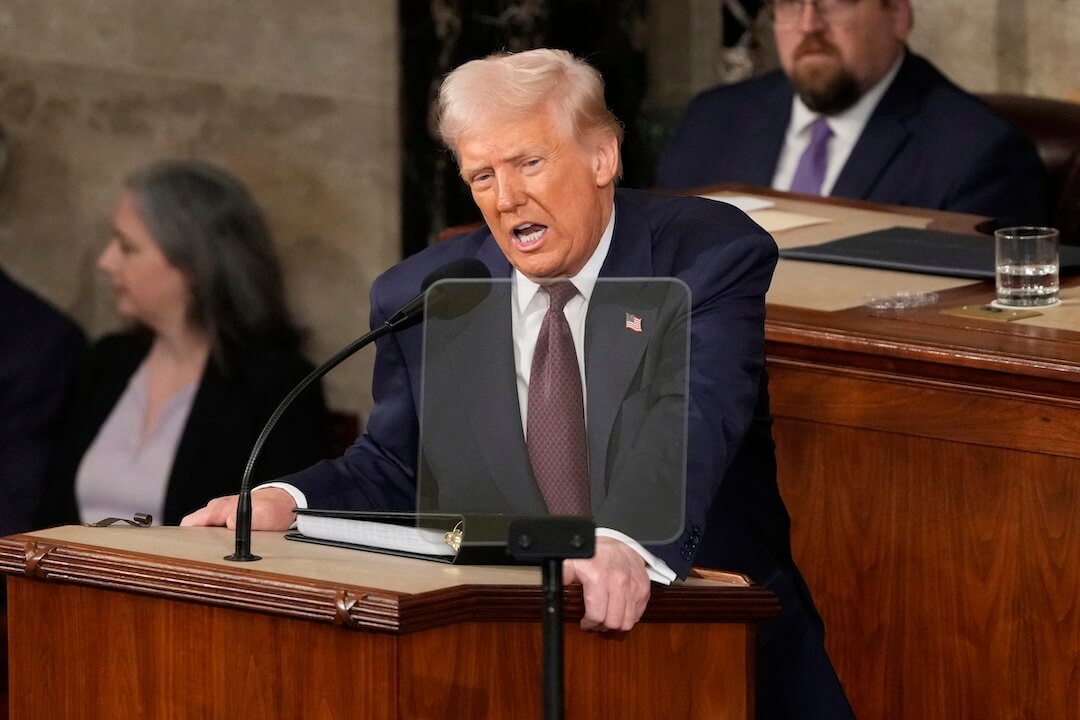April 1 may forever haunt Colin Crawford, Los Angeles Times Director of Photography, and Brian Walski, a staff photographer covering the war in Iraq for the paper.
That was the day Walski was fired, after it was revealed that a photo he submitted on Sunday was actually a composite of two images he had captured.
The photo was shared primarily with other Tribune properties via Newscom, the company’s internal picture distribution service. Both the Hartford Courant and The Chicago Tribune used the photograph prominently on Monday.
Thom McGuire, the Courant‘s Assistant Managing Editor for Photography & Graphics, says he is still “sick to my stomach over the whole episode,” and has been since Monday night.
On Sunday night, McGuire had edited about 500 pictures from various services when he saw the picture from Walski. He liked the image so much that he called the Times for additional caption information, then published the image across six columns on the front page.
“It was a great image,” McGuire says, “and I missed the manipulation, and I feel bad for everyone involved.”
Others did not miss it. A Courant employee was looking through images for a friend and noticed what appeared to be duplication in the picture. The employee brought it to the attention of the copy desk, which then immediately alerted McGuire.
“After about a 600 percent magnification in Photoshop, I called Colin to ask for an investigation,” McGuire says.
Across the country, Crawford’s immediate reaction was one of “shock and disbelief.”
“I said out loud, ‘No way! There must be a technical, digital… satellite glitch explanation.'”
“He sent us 13 very good images Sunday,” recalls Crawford, “We had to get information and give him the benefit of the doubt. And it took a day to raise him.”
Walski, by telephone in southern Iraq, acknowledged that he had used his computer to combine elements of two photographs, taken moments apart, in order to improve the composition.
In an e-mail to the entire photography staff of the Times, Walski admitted his lapse in judgment and accepted responsibility for it. In his 214-word apology, he writes, in part:
This was after an extremely long, hot and stressful day but I offer no excuses here. I deeply regret that I have tarnished the reputation of the Los Angeles Times, a newspaper with the highest standards of journalism, the Tribune Company, all the people at the Times and especially the very talented and extremely dedicated photographers and picture editors and friends that have made my 4 and a half years at the Times a true quality experience.
I have always maintained the highest ethical standards throughout my career and cannot truly explain my complete breakdown in judgment at this time. That will only come in the many sleepless nights that are ahead.
Interviewed by Poynter Online via sat phone from Kuwait City, LA Times staff photographer Don Bartletti recounts seeing his colleague and former co-worker Wednesday afternoon, after Walski returned from the desert.
“He is my friend and I respect the heroic images that he made and the tremendous effort that he has contributed,” Bartletti said.
“When I saw him, I really did not recognize him. He was sunburned, had not eaten in days, nor slept in 36 hours, his clothes were filthy, his beard — all over the place. And he smelled like a goat.”
Bartletti recalls asking him, “How could you do this?”
Walski said: “I f—ed up, and now no one will touch me. I went from the front line for the greatest newspaper in the world, and now I have nothing. No cameras, no car, nothing.”
Bartletti thinks he understands what happened. “He got into a zone. He was on a head roll, making fantastic images, and it got out of hand. He told me that he did not plan to send the image and was just messing around. He sent it anyway… didn’t know what he was doing, but he did it. With all that he was facing, how did he have the presence of mind? It just got out of hand.”
Fatigue and horrific conditions are only part of why crazy things can happen in war zones, and Crawford admits that he “really worried about him, but was confident that he was stable after several conversations (via sat phone).” He contends the firing was “the right thing.”
“What Brian did is totally unacceptable and he violated our trust with our readers,” Crawford says. “We do not for a moment underestimate what he has witnessed and experienced. We don’t feel good about doing this, but the integrity of our organization is essential. If our readers can’t count on honesty from us, I don’t know what we have left.”
Chicago Tribune Associate Managing Editor for Photography Bill Parker agrees, adding that he is “profoundly saddened by this incident.”
The Tribune planned to publish a correction in Thursday’s paper.
On Tuesday at 8:30 p.m. Pacific Time, the Los Angeles Times posted an editors note on its website notifying readers about the breach of its photographic ethics policy, the investigation and the subsequent firing of Walski for altering the photo of a British soldier and a group of Iraqi civilians. All three photos — the two originals and the altered composite — were published by the Times and the Courant on Wednesday.
“Unfortunately the stain of this photograph will harm journalists collectively,” said Betty Udesen, a Seattle Times staff photographer.
Aboard the USS Abraham Lincoln, in the Persian Gulf, embedded New York Times photographer Vincent LaForet agrees, and feels that as part of the world media, “There is not ever a good time for such manipulation, but this is the worst time. What really differentiates us from other photographers and media is our credibility. We have a history of getting it right, accurately… Our credibility is all that we have.”
Nevertheless, LaForet is sympathetic.
“I have a good idea of what he went through,” he says, having been assigned to Islamabad during the Afghanistan conflict.
Currently going into day 27 of being embedded, he says, “I know about sleep deprivation. I can speculate that he has been working day in and day out and may have experienced mental exhaustion, and this may have been just a lapse of judgment. But when I look at the level of detail, the intricacy shows that this was reflected upon. I must ask myself why he broke the standard. For me there is no acceptable explanation.”
“Being in the desert away from your readers does not mean you have free license to deceive them,” agrees Maria Mann, former AFP, North American Photo Director and now the principal of The Creative Eye Consulting.
“The Los Angeles Times acted swiftly and decisively in dealing with a photographer who felt that altering the truth was a viable option,” she says.
We may never know what led Walski, a 25-year veteran who had been with the Times since 1998, to deceive the viewing world.
But we do know that to best serve our profession and our readers, we can be ever vigilant and aware of the temptation that modern technology offers.
“I am going to be more cautious,” the Courant‘s McGuire says. “Really, it is not about me, it is about will people trust us to tell the truth?”





